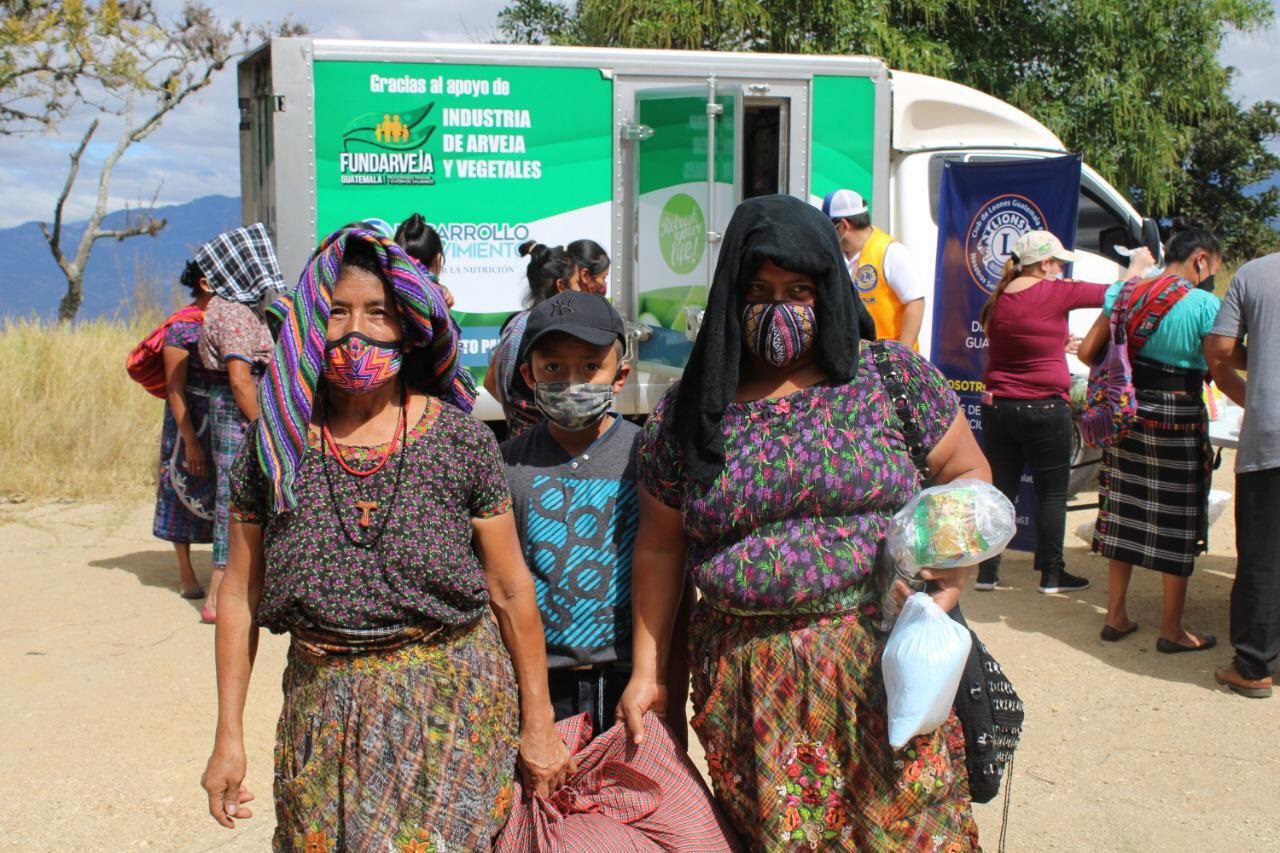By Katie Lutz
Food banks are relentlessly creative in their commitment to reaching remote groups, especially during these difficult times. In honor of the International Day of the World’s Indigenous Peoples, commemorated on 9 August, we highlighted some of the unique ways that food banks are serving these communities with nutritious foods.
Mesa Brasil Sesc, Brazil’s national food bank network, serves 74 ethnic groups, including about 23,000 Indigenous Peoples. “[We’ve been serving these groups] in a systematic way for more than 10 years and, with this current pandemic, our work has intensified,” said Ana Cristina Barros, Assistant Manager with Sesc’s National Department.
Building trust is crucial to providing culturally appropriate and effective food relief. Ana Cristina shared that Sesc gains access to communities through reputable local organizations and through the leadership of the indigenous district. Logistically, it can be very challenging to provide food given the lack of roads and rail throughout the country. But Mesa Brasil Sesc has found a way – in the Amazonas state for example, where Indigenous Peoples often live in communities inaccessible by roads, the food bank delivers food stocks via small boats.
Banco de Alimentos de Quito in Ecuador has been serving six Indigenous communities for the past year. José Luis Guevara, Executive Director of Banco de Alimentos de Quito, shared that his food bank received requests from the Indigenous communities for support. “Due to the high rate of poverty among the Indigenous population, they have communicated from different communities in the country requesting our support, including text messages indicating that Spanish is not their mother tongue. We identified the need and after an introduction requesting compliance with the requirements for membership in the Food Bank, we proceeded to enter [the communities] into our system as beneficiary agencies,” José Luis said.
Two years ago, Fundación Banco De Alimentos Paraguay, based in Asunción, began serving Indigenous communities. Federico Gonzalez, Executive Director of Fundación Banco De Alimentos Paraguay, said that he is proud to serve Indigenous Peoples because “…they are native peoples who should be more present in our activities because of what they represent for our national culture.”
To reach the remote communities, Federico and his team connect with a trusted individual who makes the introduction between the food bank and the community. He shared, “Gaining trust is not easy, but once they know and trust you, they open their doors to you.”
In the Northern Territory of Australia where 30 percent of the population is Indigenous, Foodbank Northern Territory serves more than 30 Australian Aboriginal and Torres Strait Islander language groups. Since the food bank began providing service in 2015, the scale of food relief has grown year over year, especially in its remote school program, which enables Indigenous students to access nutritious breakfast and lunch programs. In 2019, Foodbank Northern Territory was awarded a GFN Zero Hunger Challenge grant to expand its service to Indigenous Peoples.
Getting the food to Indigenous communities in the Northern Territory can prove extremely challenging. Peter Chandler, General Manager Operations at Foodbank Northern Territory said, “Food is delivered via providers who offer regular freight services to the communities, but the roads are often poor with varying degrees of maintenance. Long distances are travelled – up to 1000km, and 500km can be on unsealed roads. Remote islands are serviced via sea barges, with delivery locations varying with tides and seasonal variations between the dry and monsoonal seasons. Remote communities are often inaccessible by road for weeks and months in the monsoonal wet season.”
Directly south of the Northern Territory is South Australia, which consists of almost 1,000,000 square kilometers. In addition to supporting Aboriginal peoples living in and around Adelaide, Foodbank South Australia supports many of the remote Indigenous communities living in the desert interior of the state, including 2,400 Aboriginal peoples across several community homelands in Anangu Pitjantjatjara Yankunytjatjara, or APY Lands.
To get food to the APY Lands, Leigh Royans, General Manager and Founder of Foodbank South Australia, shared, “We transport by refrigerated road train, over 3,600 kilometers round trip up and back to the outermost community from our two Adelaide-based warehouses that provide both ambient school breakfast foods and fresh fruit and vegetables. This happens once a week, carrying free fresh fruit and veggies to remote community schools, 50 weeks of the year. Food security has definitely been strengthened via the sustained provision of easily accessible, regular food supply services to targeted areas (e.g., school children).”
In Canada, Food Banks Canada serves the First Nations, Inuit and Métis peoples – and has been since the start of food banking in Canada in 1981. In parts of Canada, particularly in Alberta, there are even food banks on reserves.
Kirstin Beardsley, Chief Network Services Officer for Food Banks Canada, shared that her organization is having “more deliberate conversations” around food sovereignty, which is “a recognition that colonialism took away Indigenous populations’ self-sustaining access to food” – and the role that food banks should have in providing support. When it comes to accessing healthy and nutritious food, Kirstin said, “Indigenous Populations know the solutions. We’re asking ourselves how we can advocate for them.”
The right to healthy and safe food is a fundamental human right. GFN is honored to work alongside food banks to feed Indigenous peoples around the world.
